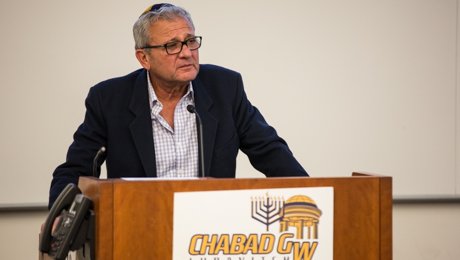When Steven Spielberg’s 2005 film “Munich” was released, it secured five Academy Award nominations and received widespread critical acclaim. The movie opens with a depiction of the Munich massacre during the 1972 Summer Olympics, in which members of a Palestinian terrorist organization shot two Israeli athletes and took another nine as hostages, eventually killing them all.
Although it was based on history, Dan Alon observed the film simply as imagination. No one could truly replicate what had happened. He knew that the true story remained only in the memories of five Israeli survivors, who had lived the nightmare firsthand.
Mr. Alon was one of those survivors. He had traveled to Munich as a champion fencer, eager to compete in an international celebration that represented peace, friendship and unity. The tragedy left him traumatized, and he didn’t speak about it for more than 30 years. But he broke his silence in 2005, following the release of “Munich,” and last Tuesday, he shared his real-life account with the George Washington University community at an event organized by the Jewish student organization Chabad GW. The event was co-sponsored by the Student Association and co-hosted by the GW Program in Judaic Studies, the athletics department and GW Hillel.
Mr. Alon explained to an audience at the Elliott School of International Affairs that his fencing career started at “age zero.”
“I was born with a sword in my hand,” he joked.
His father had been a talented fencer who didn’t achieve his dream of competing for gold because the Olympics committee hadn’t yet recognized Israel as an official state. That changed by the time Mr. Alon was growing up, and his father became his first coach. Mr. Alon slashed his way through junior competitions, working his way to the national championship title.
Mr. Alon earned the opportunity to join his fellow Israeli athletes in Munich for the 1972 Olympic Games. German officials took the athletes to the Olympic Village. They entered a small building with separate entrances to five apartments. Mr. Alon picked the second unit—a decision he still thinks about to this day.
“I can’t explain why… Without any kind of thinking—like someone was leading me—I took my luggage and went to the second entrance,” he said.
During their stay, the Israeli athletes enjoyed a performance of “Fiddler on the Roof.” They returned later that night, and the Olympic Village fell quiet as everyone went to sleep. At about 4:30 a.m., the terrorists barged into the first apartment. They rounded up the occupants and ordered to be taken to the rest of the Israeli athletes. Two Israelis who tried to fight back were shot and killed immediately. The terrorists made their way to each of the other rooms, but for some reason, they walked directly passed the second room, where Mr. Alon slept.
He and his roommate awoke to the crackling of machine guns. After peering out the window, Mr. Alon caught a glimpse of a masked man holding a grenade. He heard him say he was a member of a Palestinian terrorist organization.
“We knew now we were in trouble. Time past slowly,” Mr. Alon said.
Mr. Alon and four athletes in the second room formulated a plan to move to safety. It was cold out, and they were clad only in their Israeli uniforms. They took turns creeping down the stairs quietly. Once they got to the bottom, they had to race outside toward German police. Mr. Alon followed a fellow athlete and began running when he somehow made eye contact with a terrorist wielding a gun.
“He looked at me, and I looked at him for about three seconds, and he didn’t shoot. I walked away to the police, standing just 50 yards away,” Mr. Alon said.
The white and blue on his uniform was conspicuous—Mr. Alon said he and the other athletes looked like Israeli flags. He isn’t sure why the terrorist didn’t shoot him on sight, but he thinks about several theories. He also thinks about the helicopter that lifted the nine hostages into the black sky. Mr. Alon watched, knowing somewhere deep down that he would never see the athletes again.
German authorities promised they wouldn’t let the terrorists leave the country alive. They stopped the helicopter in a scene that quickly turned bloody. A gun battle between the Germans and the terrorists ensued, and most of the terrorists were killed. However, the ones who survived turn their guns on the Israeli hostages, shooting each one.
It took Mr. Alon years to deal with the trauma of that night. He released a book, “Munich Memoir,” in 2012 recounting how the experience affected his life. In the last page of his book, Mr. Alon describes returning to Berlin to speak at a lecture. On his way to the airport, he asked his driver to take him to Brandenburg Gate, a symbol Mr. Alon said is associated with Nazi Germany the horrors of the Holocaust. He and his driver blasted Jewish music from their car as loud as they could and danced together in the front of the gate, honoring the Jews who died in Munich and those who had died in the Holocaust.
“I felt 6 million Jews and 11 angels singing and dancing with me. It was incredible,” he said.


